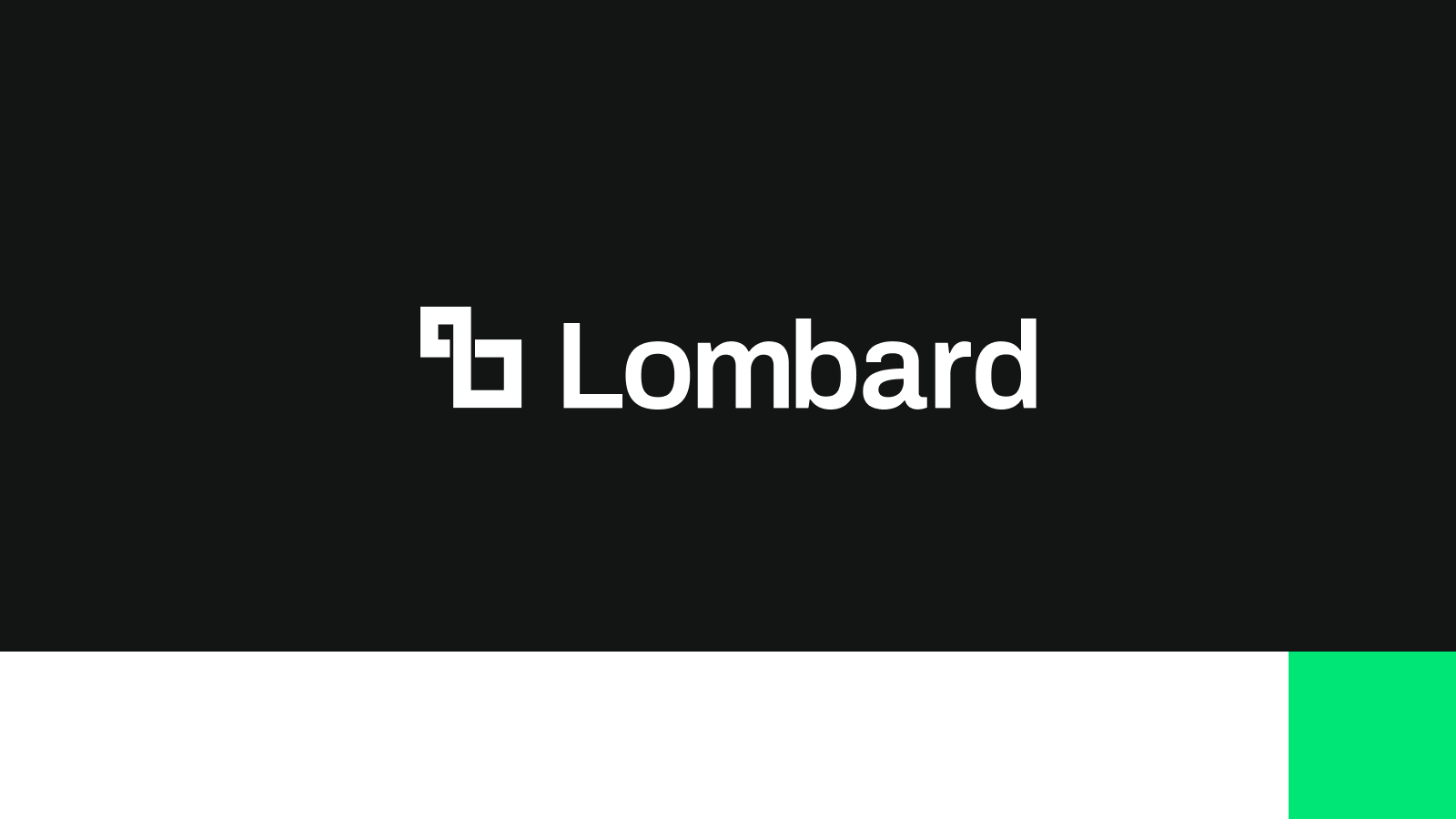The
Bitcoin DeFi (BTCFi) landscape is experiencing a transformative shift, moving from isolated applications to comprehensive financial infrastructure. At the forefront of this evolution is
Lombard, a protocol designed to unlock the immense potential of
dormant bitcoin (BTC) by transforming it into a productive, cross-chain asset. With over $1.48 billion in Total Value Locked (TVL) and a dominant 57% share of the Bitcoin Liquid Staking Token (LST) market, Lombard is positioned to become the
Tether/Circle of the Bitcoin ecosystem.
Lombard's solution,
LBTC (Liquid Bitcoin), serves as a standardized, yield-bearing representation of BTC that can seamlessly operate across multiple blockchains. The protocol's recent milestone—the
Token Generation Event (TGE)for its governance token
BARD on September 18, 2025—marks a significant step in its journey to build robust infrastructure for Bitcoin capital markets. This article explores Lombard's technology, team, tokenomics, and its potential to redefine Bitcoin's role in decentralized finance.
What is Lombard (BARD)?
Lombard is a
decentralized finance (DeFi) protocol that aims to bridge Bitcoin with the broader multi-chain ecosystem by creating a liquid, yield-generating version of BTC called
LBTC. The core vision is to transition Bitcoin from a
static store of value to an
active, productive asset that can be used as collateral, settlement asset, and strategic reserve across various DeFi applications.
Key to Lombard's offering is its focus on
institutional-grade security and
cross-chain compatibility. LBTC is backed 1:1 by native Bitcoin, held securely by a consortium of 14 major digital asset institutions, including OKX, Galaxy, and DCG. This ensures transparency and reduces counterparty risk, making LBTC a trusted asset for users and developers alike.
Lombard’s infrastructure is often described as a
"full-stack" solution, combining secure asset issuance with seamless interoperability. By enabling Bitcoin to flow freely across ecosystems like Ethereum, Base, and Sui, Lombard effectively turns every connected blockchain into a
Bitcoin Layer-2, eliminating the need for isolated environments and boosting capital efficiency.
Who Created Lombard (BARD)?
Lombard was founded by a team with strong backgrounds in
cryptocurrency investment, protocol economics, and engineering. The project is notably one of the few in the BTCFi space led by a
Western-based team, which enhances its appeal to global institutional investors.
-
Jacob Phillips (Co-founder): Former partner at Polychain Capital Ventures, bringing extensive experience in crypto investments and ecosystem development.
-
Dr. Sankha Banerjee: Holds a Ph.D. from MIT and previously served as the Chief Protocol Economist at Babylon, contributing expertise in tokenomics and mechanism design.
-
Olivia Thet: Former senior engineer at Coinbase, where she worked on Ethereum 2.0 staking infrastructure.
-
Patricia Ho: Former COO of Scroll and ex-Deputy Legal Director at OKX, providing regulatory and operational expertise.
Lombard raised
$16 million in a seed round led by Polychain Capital, with participation from Franklin Templeton, Binance, OKX, Bybit, Galaxy, and other major institutions. This funding has supported the development of Lombard’s multi-chain integrations, compliance frameworks, and ecosystem growth initiatives.
How Lombard (BARD) Works
Lombard’s operational framework is built on a
three-layer architecture designed to ensure security, interoperability, and scalability:
Base Layer (Lombard Ledger): This layer functions as a
Bitcoin L2 equivalent and is operated by a consortium of institutional validators, including OKX, Galaxy, DCG, Wintermute, Antpool, and F2pool. The Lombard Ledger maintains the highest security standards by leveraging
Proof-of-Reserves and
multi-signature mechanisms to ensure 1:1 backing of LBTC with Bitcoin.
Middleware (LBTC and BTC Wrapper): This layer is responsible for minting and redeeming LBTC. It acts as a
decentralized and permissionless bridge that allows users to convert native BTC into LBTC, which can then be deployed across multiple blockchains. The middleware includes Software Development Kits (SDKs) that facilitate integration with various DeFi applications.
Distribution Layer (Lombard Vaults): This component aggregates BTC liquidity and directs it toward high-yield opportunities across supported networks. With over
$500 million in TVL, Lombard Vaults optimize returns by automating yield strategies such as lending, staking, and restaking.
This architecture allows Lombard to combine
security at the base layer with
flexibility at the distribution layer, creating a system where Bitcoin holders can maintain exposure to their asset while earning yields and accessing DeFi services across ecosystems.
Features of Lombard
Cross-Chain Compatibility: LBTC is available on
12+ blockchains, including Ethereum, Base, and Sui, making it one of the most widely integrated Bitcoin derivatives. This cross-chain functionality enables users to leverage BTC liquidity in diverse DeFi applications without needing to bridge assets manually.
Institutional-Grade Security: Lombard’s institutional signer consortium ensures that LBTC is
securely backed by Bitcoin. The protocol has maintained a
flawless security record since launch, with zero depegging incidents or breaches.
Proof-of-Reserves: Lombard is the
first Bitcoin LST to implement real-time Proof-of-Reserves, allowing users to verify at any time that the circulating supply of LBTC is fully collateralized.
High Utilization Rate: LBTC boasts a
77% utilization rate, indicating that most of the minted LBTC is actively deployed in yield-gener activities rather than lying idle. This reflects strong demand and practical utility within the DeFi ecosystem.
Ecosystem Integration: Lombard has partnered with key DeFi protocols, including AAVE, which has integrated LBTC as a collateral asset. This integration enhances LBTC’s utility and provides users with more opportunities to leverage their Bitcoin holdings.
Lombard Token (BARD) and Tokenomics
The
BARD token serves as the
governance and utility token of the Lombard ecosystem. Its primary functions include protocol governance, ecosystem incentives, and potential fee discounts.
Token Distribution and Supply
Total Supply: Not fully disclosed, but the initial FDV at the community sale was approximately
$450 million.
Community Sale:
1.5% of the total supply was sold on Buidlpad for $6.75 million, with priority access given to LBTC holders and existing users.
Investors and Team: Allocations are likely held by investors and the team, with vesting schedules to ensure long-term alignment.
Ecosystem Fund: Managed by the
Liquid Bitcoin Foundation, which oversees grants, partnerships, and development initiatives.
Utility of BARD
Governance: BARD holders can participate in decision-making processes, such as proposing and voting on protocol upgrades, treasury management, and strategic partnerships.
Ecosystem Incentives: BARD is used to reward users and developers who contribute to the growth of the Lombard ecosystem, including liquidity providers and integrators.
Fee Discounts: There is potential for BARD to be used for discounted fees within the Lombard platform, though this feature depends on future governance proposals.
Advantages and Risk Factors
Advantages
Market Leadership: With
$1.48 billion TVL and a 57% market share in the Bitcoin LST space, Lombard is the largest player in the restaked BTC category.
Rapid Growth: LBTC reached
$1 billion TVL in just 92 days, making it the fastest-growing interest-bearing token in crypto history.
Institutional Backing: Supported by top-tier institutions, including Galaxy, DCG, and OKX, Lombard combines decentralization with institutional trust.
Full-Stack Solution: Lombard’s three-layer architecture addresses every aspect of Bitcoin DeFi, from secure minting to yield optimization.
Risk Factors
Competition: Lombard faces competition from protocols like
SolvBTC ($1.15 billion TVL) and
PumpBTC ($115 million TVL), which offer similar Bitcoin restaking services.
Dependence on Babylon: Lombard relies on the Babylon protocol for Bitcoin staking. Any issues with Babylon could negatively impact Lombard’s operations.
Regulatory Challenges: As with any DeFi protocol, regulatory changes could affect Lombard’s operations, especially given its institutional focus.
Market Risks: A decline in TVL (
6.75% over the past month) indicates potential capital rotation pressures, while
low base yields (~1% APY) may not attract yield-seeking users in a bull market.
Conclusion
Lombard represents a
pioneering effort to integrate Bitcoin into the expanding multi-chain DeFi ecosystem. By combining institutional security with cross-chain interoperability, Lombard addresses critical limitations that have historically prevented Bitcoin from being used as productive capital. The successful launch of LBTC and the recent TGE of BARD underscore the protocol's potential to become a foundational layer for Bitcoin-based DeFi.
However, Lombard is not without challenges. Competition, regulatory uncertainties, and market volatility could impact its growth trajectory. Despite these risks, Lombard’s strong institutional backing, innovative architecture, and strategic positioning make it a key project to watch in the BTCFi space.
As the crypto industry continues to evolve, Lombard’s vision of transforming Bitcoin into a dynamic, yield-generating asset could play a crucial role in shaping the future of decentralized finance.
References:
CoinCatch Team
Disclaimer:
Digital asset prices carry high market risk and price volatility. You should carefully consider your investment experience, financial situation, investment objectives, and risk tolerance. CoinCatch is not responsible for any losses that may occur. This article should not be considered financial advice.


